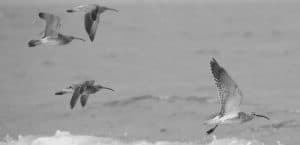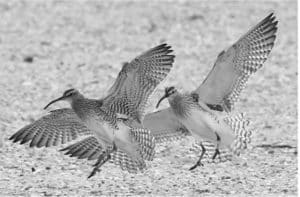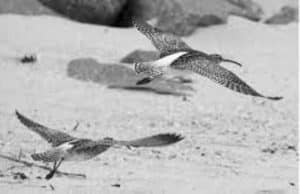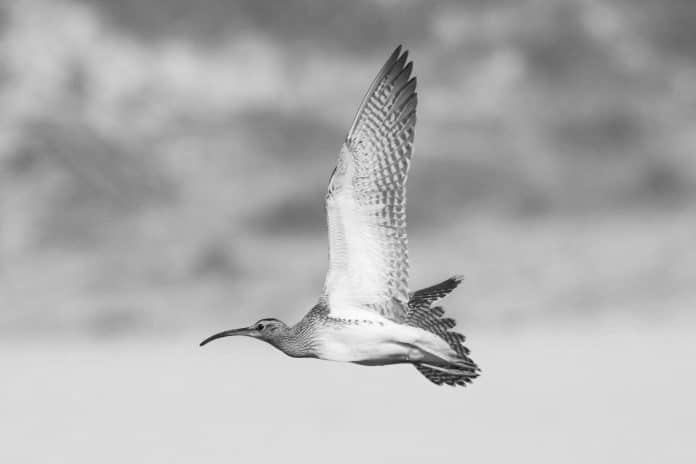Introduction to the Whimbrel Bird
The Whimbrel (Numenius phaeopus) is a majestic and captivating bird that undertakes remarkable migratory journeys. These medium-sized waders are known for their long, curved bills, which they use to probe the mudflats and marshes in search of food. Whimbrels in Tanzania have a distinct brownish coloration with a lighter belly and a striped head pattern. They are found in various regions worldwide, including the coasts of North America, Europe, Asia, and Africa.
Overview of Whimbrel Migration Patterns

Whimbrels are highly migratory birds, traveling vast distances during their annual migrations. They breed in the Arctic tundra and spend the winter months in more temperate regions. The migration routes they follow vary depending on their breeding grounds, but most populations of Whimbrels migrate along the Atlantic Flyway. This flyway stretches from the Arctic to South America, covering a distance of thousands of kilometers.
The Significance of Tanzania in Whimbrel Migration
Tanzania plays a crucial role in the migration of Whimbrels, as it serves as an important stopover site for these magnificent birds. Located along the eastern coast of Africa, Tanzania provides an abundant food source and suitable habitat for Whimbrels during their long and arduous journey. The coastal wetlands and mudflats of Tanzania offer an ideal resting place for these birds to refuel and regain their strength before continuing their migration.
Best Time and Locations to Witness Whimbrel Migration in Tanzania
To witness the awe-inspiring spectacle of Whimbrel migration in Tanzania, it is essential to visit during the right time and in the right locations. The best time to observe this phenomenon is during the months of September to November when large flocks of Whimbrels pass through Tanzania on their way to their wintering grounds. The coastal areas of Dar es Salaam, Zanzibar, and the Rufiji Delta are prime spots for witnessing this majestic migration.
Unique Behaviors and Characteristics of Whimbrels During Migration

During their migration, Whimbrels exhibit fascinating behaviors and characteristics. These birds are known for their distinctive flight pattern, with their long wings and curved bills creating an elegant silhouette against the sky. Whimbrels often fly in V-formation, which helps reduce wind resistance and facilitates communication within the flock. They are also highly vocal, emitting loud and melodious calls during their journey.
Conservation Efforts for Whimbrel Preservation in Tanzania
Due to habitat loss and other environmental threats, the population of Whimbrels is declining worldwide. In Tanzania, efforts are being made to preserve the habitats and protect the Whimbrel population. Conservation organizations are working to raise awareness about the importance of these birds and their role in the ecosystem. By supporting these initiatives, we can contribute to the conservation of Whimbrels and ensure their continued presence in Tanzania.
Tips for Observing and Photographing Whimbrels During Migration
If you plan to observe and photograph Whimbrels during their migration in Tanzania, here are some helpful tips. Firstly, make sure to bring a pair of binoculars or a spotting scope to get a closer look at these birds. Find a comfortable spot with a clear view of the sky and the coastal areas. Patience is key, as Whimbrels may take some time to appear. Be mindful of their behavior and try not to disturb them. Finally, make sure to respect and follow any guidelines or regulations set by local authorities or conservation organizations.
Other Migratory Bird Species in Tanzania
Tanzania is not only home to Whimbrels but also hosts a diverse array of migratory bird species. Along with Whimbrels, you might have the opportunity to spot other fascinating birds such as flamingos, pelicans, storks, and various species of shorebirds. The wetlands and coastal areas of Tanzania provide an ideal habitat for these migratory birds, making it a paradise for birdwatchers and nature enthusiasts.
Accommodation and Travel Recommendations for Whimbrel Watching in Tanzania
To fully enjoy the experience of witnessing Whimbrel migration in Tanzania, it is crucial to plan your accommodation and travel arrangements accordingly. There are several lodges and resorts available near the coastal areas, offering comfortable stays with stunning views of the surroundings. It is advisable to book your accommodation well in advance, especially during the peak migratory season. When traveling to Tanzania, consider hiring a local guide or joining organized birdwatching tours to make the most of your experience.
Conclusion: The Awe-Inspiring Experience of Witnessing Whimbrel Migration in Tanzania

The annual migration of Whimbrels in Tanzania is a truly awe-inspiring spectacle of nature. From their distinct appearance to their remarkable flight patterns, these birds never fail to captivate observers. As we witness this majestic migration, we must also recognize the importance of conservation efforts to protect the Whimbrels and their habitats. By visiting Tanzania during the right time and in the right locations, we can have a front-row seat to this extraordinary natural phenomenon and create memories that will last a lifetime.


































